Rest days are considered sacred in the world of fitness. The concept of rest is simple: after pushing your body through intense workouts, you need a day (or two) of complete rest to recover. But a new trend backed by science and supported by top trainers, athletes, and rehabilitation experts is reimagining the way to reap the recovery benefits most effectively from a rest day.
Active recovery is emerging as a smarter, more effective alternative to passive rest days — and it’s quickly becoming a game-changer in performance and longevity.
In this article, we’ll break down what active recovery is, why it works, the science behind it, and how you can incorporate it into your routine. By the end, you’ll understand why lying on the couch all day after a workout may not be the best path to progress.
What Is Active Recovery?
Active recovery is a low-intensity exercise session performed on a rest day or immediately after a high-intensity workout. Unlike complete rest, which involves no exercise, active recovery aims to keep the body moving — just at a much lower intensity. Think light jogging, walking, yoga, swimming, or cycling at a conversational pace.
The primary goal of active recovery is to promote blood flow, accelerate muscle repair, and reduce soreness without putting additional strain on your body. It can take many forms, including:
- Light cardio like walking or cycling
- Stretching or mobility work
- Swimming or water aerobics
- Low-impact workouts like yoga or Pilates
- Active hobbies like dancing, hiking, or playing with your kids
Why Passive Rest Isn’t Always the Best
Rest is critical — no question. Your body needs time to repair muscles, replenish energy stores, and balance hormones after strenuous workouts. But there’s a difference between rest and inactivity.
On passive rest days (e.g., binge-watching Netflix on the couch), blood flow slows down, which can lead to muscle stiffness, increased soreness, and prolonged recovery time. In contrast, light movement can improve circulation, remove metabolic waste products like lactic acid, and supply muscles with oxygen and nutrients for faster healing.
In fact, inactivity may contribute to increased delayed onset muscle soreness (DOMS) than active movement. According to the American Council on Exercise (ACE), low-intensity activity is one of the most effective ways to reduce DOMS and keep muscles loose and limber.[1]
The Science Behind Active Recovery
How exactly does active recovery help your body bounce back from a workout? Let’s dig into the evidence.
Increased Blood Flow Speeds Up Healing
A key component of recovery is improved circulation. When you move, your heart rate increases slightly, which boosts blood flow to your muscles. This enhanced circulation helps clear out metabolic byproducts like lactate while delivering fresh oxygen and nutrients to repair tissues.
A study published in the Journal of Sports Sciences found that athletes who engaged in active recovery had lower levels of blood lactate than those who rested passively, allowing them to bounce back faster and perform better in subsequent workouts.[2]
Reduced Soreness and Muscle Fatigue
Active recovery has been shown to significantly reduce muscle soreness. A 2018 study from Frontiers in Physiology reported that active recovery was more effective than passive rest in decreasing perceived muscle soreness after high-intensity interval training (HIIT).[3] Participants who walked or cycled at a low intensity experienced faster recovery compared to those who did nothing at all.
Improved Mobility and Joint Health
Staying sedentary can cause tightness in the muscles and connective tissues. On the flip side, gentle movement like yoga or stretching on rest days promotes joint lubrication and preserves mobility. Over time, regular active recovery can reduce the risk of injury by improving your range of motion and muscular balance.
A study from the Journal of Strength and Conditioning Research demonstrated that active recovery involving dynamic stretches led to better range of motion and lower injury risk in athletes compared to those who performed only static recovery protocols.[4]
Mental Health Benefits
Let’s not forget about the mental side of fitness. Rest days can sometimes lead to lethargy, mood swings, or guilt — especially for highly active individuals. Active recovery combats these effects by triggering the release of endorphins, your body's natural mood boosters. Even a 20-minute walk outdoors can reduce anxiety and improve mood, according to the American Psychological Association.[5]
Active Recovery vs. Overtraining: Know the Difference
On an active recovery day, it can be tempting to push yourself into doing a full-blown workout. This is where it is important to understand the clear difference between movement and exertion. Active recovery should never feel strenuous. If your heart rate rises too high, or you feel like you're pushing hard, back off the intensity until the activity feels more restorative.
Use these cues to keep your recovery active but effective:
- Intensity: Stay at 50–60% of your max heart rate
- Duration: 20–45 minutes is typically enough
- Frequency: 1–3 times per week, depending on your training volume
- Perceived Effort: You should be able to carry on a conversation comfortably
When Should You Use Active Recovery?
You can use active recovery in several ways:
1. The Day After a Tough Workout
Instead of taking a complete day off after leg day or a long run, opt for 30 minutes of light cycling or a mobility flow. Your body will thank you.
2. Between Workout Sets
Some athletes use active recovery between weightlifting or HIIT intervals — such as walking or doing mobility work — to maintain heart rate and reduce stiffness.
3. After a Competition or Race
Whether you’ve finished a marathon, a CrossFit competition, or a long hike, doing some low-intensity movement the next day can help flush out lactic acid and reduce soreness.
4. During a Deload Week
Instead of halting training altogether during a deload phase, use active recovery days to maintain movement without straining your nervous system.
Sample Active Recovery Day Plan
Here’s what a balanced active recovery day might look like:
| Time | Activity |
|---|---|
| Morning | 20-minute walk or light jog |
| Midday | 10–15 minutes of foam rolling or dynamic stretching |
| Evening | Gentle yoga (20-30 mins) or a swim |
| All Day | Stay hydrated, eat nutritious meals, and get quality sleep |
This day keeps you moving without overloading your system — while simultaneously accelerating recovery.
Best Activities for Active Recovery
If you're unsure where to start, try any of these low-impact movements:
Yoga
Focuses on flexibility, breath work, and mobility. Great for improving posture and mind-body connection.
Walking
Simple, accessible, and effective. Even 20 minutes can boost circulation and reduce soreness.
Cycling (Low Intensity)
Light pedaling helps with joint lubrication and endurance recovery.
Swimming or Water Aerobics
Buoyancy reduces stress on joints while providing gentle resistance.
Stretching & Mobility Work
Foam rolling, dynamic stretches, and targeted mobility drills maintain range of motion and reduce injury risk.
Dancing or Light Recreational Sports
Keeps your heart rate up in a fun, engaging way without overexerting.
Who Should Prioritize Active Recovery?
The answer is everyone. From elite athletes to casual gym-goers, active recovery offers benefits for all fitness levels.
- Athletes: Helps maintain performance, prevent injury, and improve recovery between events.
- Beginners: Reduces post-workout soreness and increases consistency.
- Older Adults: Encourages movement while protecting joints and heart health.
- Those with Desk Jobs: Keeps blood flowing and counters sedentary behavior.
If you’re highly stressed, sleep-deprived, or sore — active recovery can help your nervous system reset without compromising your fitness.
Rest Days Reimagined
Gone are the days when recovery meant doing nothing. Modern exercise science supports the idea that smart movement beats stillness when it comes to healing, reducing soreness, and staying consistent with your goals.
Active recovery doesn’t mean pushing harder. It means listening to your body, respecting its need for restoration, and choosing gentle movement over inactivity. The result? You bounce back stronger, faster, and more resilient.
The next time your calendar says “rest day,” don’t reach for the remote — reach for your walking shoes, yoga mat, or bicycle instead. Your body will thank you.
REFERENCES
1. American Council on Exercise. (2015). The Science of Muscle Soreness. Retrieved from www.acefitness.org.
2. Reilly, T., & Ekblom, B. (2005). The use of recovery methods post-exercise. Journal of Sports Sciences, 23(6), 619–627.
3. Dupuy, O., Douzi, W., Theurot, D., Bosquet, L., & Dugué, B. (2018). An evidence-based approach for choosing post-exercise recovery techniques. Frontiers in Physiology, 9, 403.
4. Herda, T. J., et al. (2012). The effects of dynamic stretching on range of motion, peak torque, and performance. Journal of Strength and Conditioning Research, 26(1), 41–47.
5. American Psychological Association. (2020). Exercise fuels the brain’s stress buffers. Retrieved from www.apa.org.










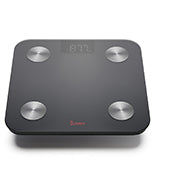





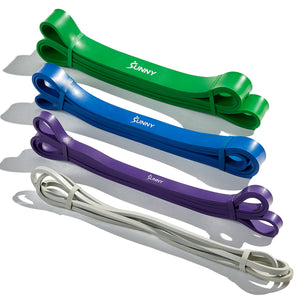
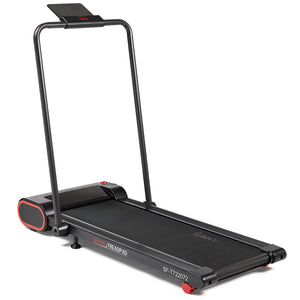
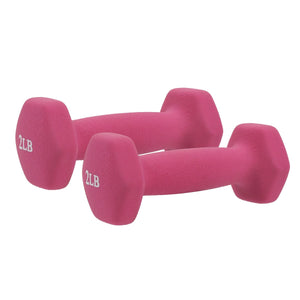

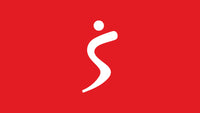






Add Your Name & Email
Please enter your name and email to continue.We won’t display your email publicly.